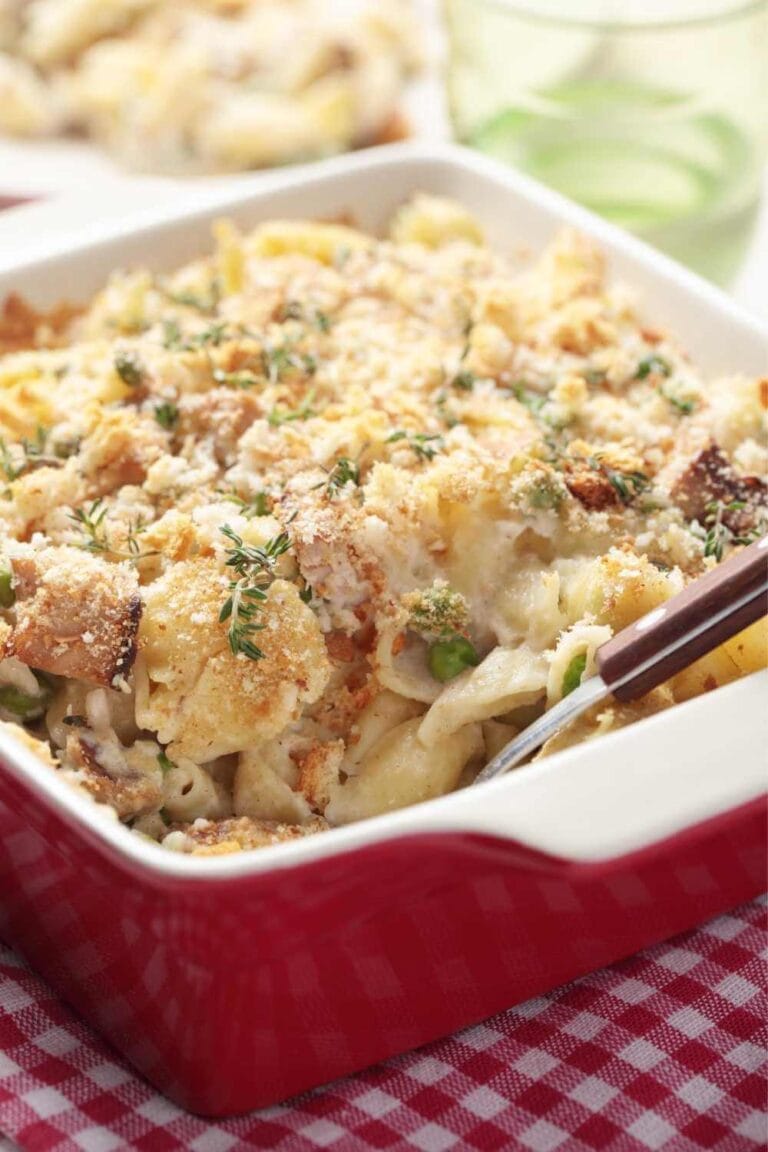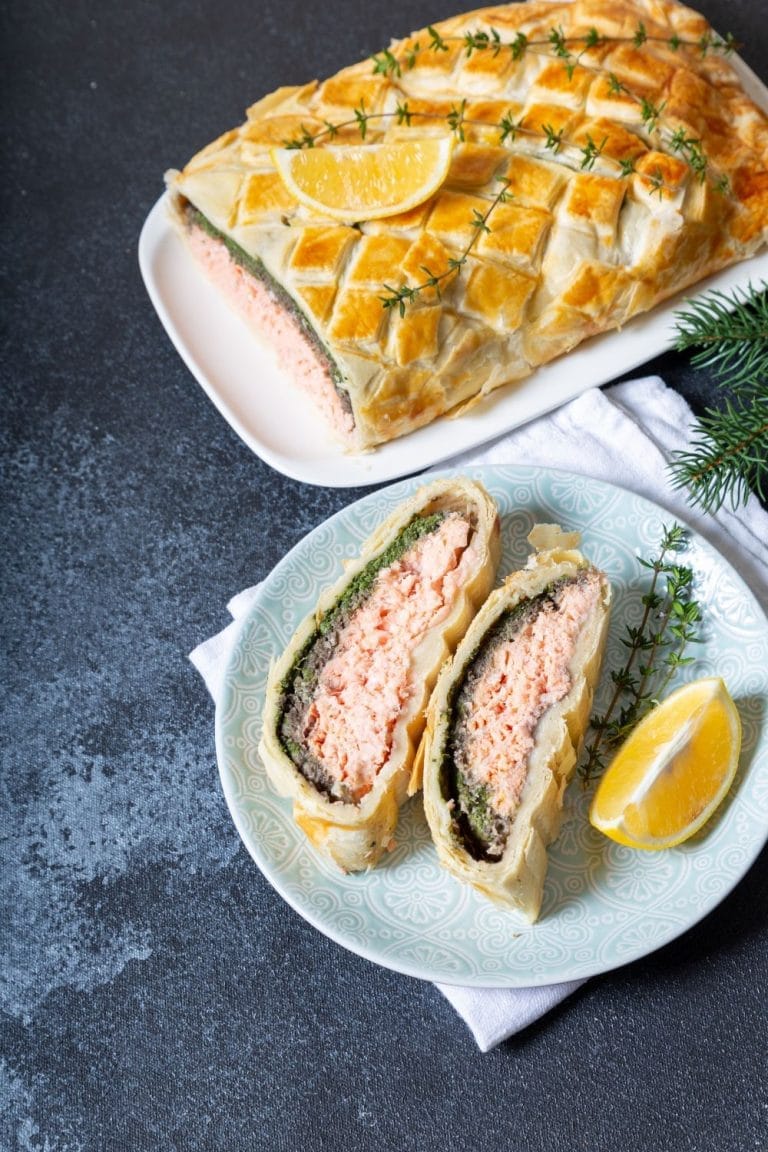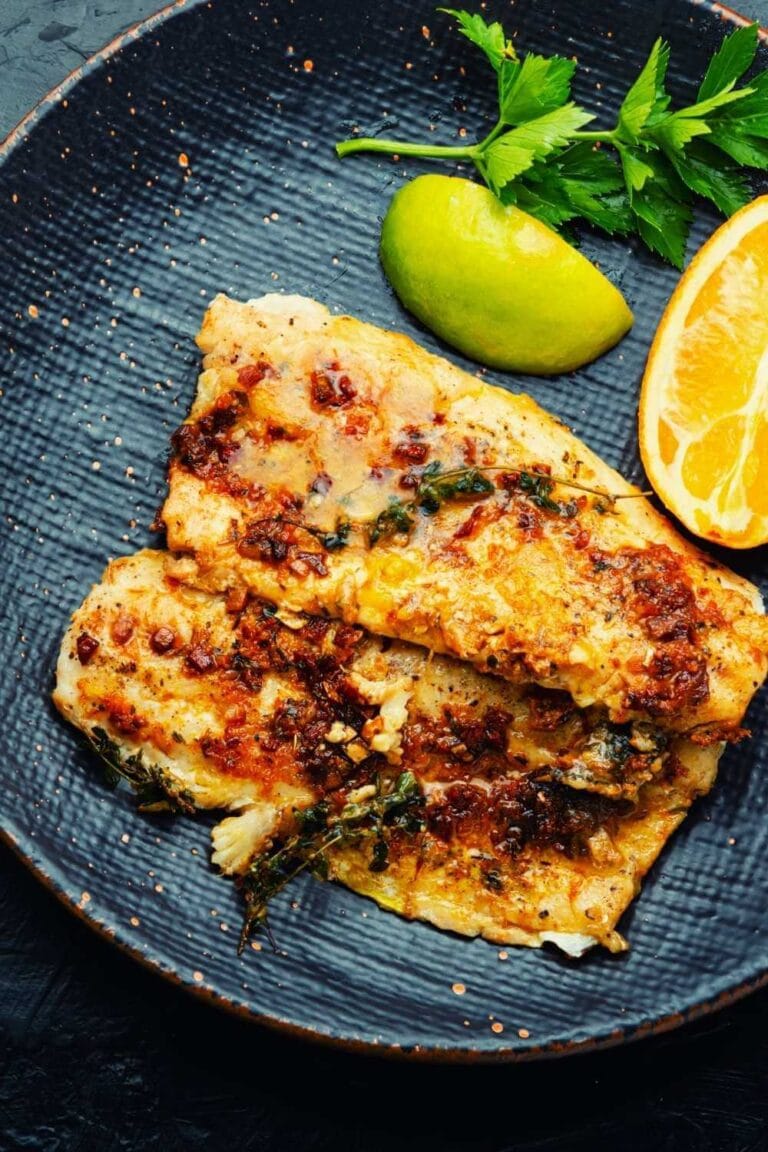Gordon Ramsay Pan Seared Halibut
Learn how to prepare perfect halibut every time with the help of this simple recipe for pan-seared halibut with a lemon butter sauce from Gordon Ramsay. Like baked Chilean sea bass, this pan-fried halibut tastes as if it came from a five-star restaurant, but it’s actually rather simple to prepare.

This butter lemon sauce for halibut not only has a rich flavor but is also a nutritious method to prepare fish. For those who aren’t sure about trying fish for the first time, halibut dishes like this one have a subtle flavor that might win them over. Give it a shot for a simple yet impressive meal.
Why You’ll Love This Recipe
- Whitefish that is tender and flaky, with a taste that is buttery and reminiscent of lemon.
- Simple to prepare and ready in less than half an hour.
- A dinner fit for a big occasion that is yet straightforward enough to make on a weekday.
Gordon Ramsay Pan Seared Halibut Ingredients
Halibut:
- Halibut. You may have four halibut fillets of 6 ounces each, or you can get one huge fillet of 1.5 pounds that can be divided into four smaller pieces. You have the option of purchasing it with or without the skin. (if you obtain the sort with skin, start by cooking it with the skin facing down.)
- Spices. Garlic powder, paprika, black pepper, sea salt
- Oil. I used olive oil, but you can substitute any oil that can withstand high temperatures, such as avocado oil.
Lemon Butter Sauce:
- Butter. I used salted butter, but you could also use unsalted butter and season it to taste with salt after cooking with it.
- Lemon Juice. Instead of using bottled lemon juice, it is strongly recommended that you squeeze the juice from a fresh lemon for the greatest flavor.
What Does Halibut Taste Like?
The halibut fish has a moderate, neutral taste and a solid texture. It’s great with chili garlic oil since the oil really helps the sauce stick to the pasta. It’s a heartier fish—the “steak” of the sea, as some would put it (similar to swordfish).
Are Halibuts Good For You?
Yes! When prepared properly, halibut is a healthy and low-fat alternative to other fish. This makes it a good choice for a nutritious meal, but it can also lead to dryness if the fish is cooked for too long. The easiest way to guarantee the food is cooked to perfection is to use a thermometer.
How Long To Cook Halibut In A Pan?
A fillet of halibut may be pan-seared for five to nine minutes, give or take, depending on the size of your pan and the heat at which it is placed. To get things off to a good start, leave the food to cook undisturbed for three to four minutes on the first side. After carefully turning it over, continue to cook it for an additional two to four minutes, or until it is completely done.
How To Make Gordon Ramsay Pan Seared Halibut
- Pat the halibut fillets totally dry with paper towels. This will guarantee that the browning is uniform. Season the fish with garlic powder, paprika, sea salt, and black pepper on both sides. Place aside.
- In a large pan, heat the olive oil over medium-high heat for 2 minutes.
- Add the fish fillets in a single layer (if all of the fish will not fit in a single layer, do it in batches). Sear the halibut for 3-4 minutes, without moving it, until the edges are opaque. Cook for another 2-4 minutes, or until cooked through.
- Remove the fish from the pan and wrap it in foil to keep it warm.
- Turn the heat down to medium-low. In the same pan, melt the butter. Allow it to melt before heating for 2-3 minutes, stirring regularly, until the butter is browned and smells nutty.
- TIP: If you enjoy garlic, try this lemon butter sauce recipe.
- Squeeze all of the liquid from both halves of the lemon into the pan with the Zulay Kitchen Lemon Squeezer. Bring to a simmer, then reduce to low heat and continue to cook for 3-4 minutes, frequently stirring, until the volume is reduced by half. The lemon butter sauce will remain runny.
- Drizzle some lemon butter sauce on top of each serving dish. Place the pan-seared halibut fillets on top of the sauce, then sprinkle with additional sauce.
What To Serve With Pan-Seared Halibut?
This Pan Seared Halibut dish has a lot of potential applications, so you can take it in a lot of different directions. And I have every single one of them! Experiment using it alongside these sorts of nutritious side dishes:
- Vegetables. While you are cooking the pan-seared halibut on the stove, you may create roasted vegetables in the oven, such as asparagus, green beans, entire roasted cauliflower, or roasted zucchini.
- Starches. Traditional options include potatoes, pasta, or rice; however, you may also prepare more nutritious vegetable substitutes, such as roasted rutabaga, zucchini noodles, or cauliflower rice.
- Salads. You may try a salad like a creamy cucumber salad, a tomato cucumber avocado salad, or a Caprese salad.
What Other Ways Can You Prepare Halibut?
Pan-searing, grilling, baking, frying, steaming, broiling, and poaching are just some of the many ways to prepare halibut steaks and fillets. And they’d all taste great with a drizzle of this straightforward Chinese chile oil.

How To Store Pan-Seared Halibut?
- In The Fridge. If you do find that you have any Pan Seared Halibut leftovers, you may keep them in the refrigerator for three to four days if you place them in an airtight container.
- In The Freezer. You may keep raw halibut in the freezer for up to three months, but you shouldn’t freeze halibut that has been pan-seared.
- To Make Ahead. Even though it can be kept warm and covered in a pan for up to 15 minutes before being served, this dish should ideally be consumed as soon as it is finished cooking.
- To Reheat. You may softly reheat the halibut in a hot skillet over medium heat, or you can do it in the oven at 350 degrees Fahrenheit. Take caution not to overcook the fish.
My Personal Recipe Tips
- Check Internal Temperature. Check the temperature of the interior of your halibut using a meat thermometer to remove every element of uncertainty from the process of searing it. The temperature of the cooked halibut should be 145 degrees.
- Fillets Of Uniform Size Should Be Used. Choose fillets that are as close in size to one another as you can get them so that the cooking will be more consistent.
- Be Very Careful When Handling Halibut. When cooking halibut, you need to exercise extreme caution when flipping the fish, and you also need to make sure that it has been exposed to the fire for a sufficient amount of time to develop a lovely crust. Investing in a fish spatula will make the task lot more manageable in the long run.
- You Shouldn’t Leave Out The Lemon Juice. The ideal taste of the fish is brought out by the addition of lemon juice, which also helps to keep the fish soft. When it comes to flavoring white fish with this fruit’s zesty flavor, there is no such thing as using too much of it.
- Resist The Impulse To Play With The Fish. The idea is to turn each fillet a single time before they are done. The more you muck with it, the more it will fall apart under your control.
- Fillets Should Be Dried Off With A Paper Towel. Before beginning to cook the fillets, remove as much moisture as possible from them by patting them down. This will not only aid in the formation of an attractive crust on the fish, but it will also prevent oil from escaping the pan (ouch!).

Gordon Ramsay Pan Seared Halibut
Ingredients
- 4 (6 ounce) halibut fillets 1.5 pounds total
- ½ teaspoon garlic powder
- ½ teaspoon paprika
- 1 teaspoon sea salt
- ¼ teaspoon black pepper
- 2 tablespoons olive oil
Lemon butter sauce:
- ½ cup salted butter
- 1 medium lemon cut in half
Instructions
- Pat the halibut fillets totally dry with paper towels. This will guarantee that the browning is uniform. Season the fish with garlic powder, paprika, sea salt, and black pepper on both sides. Place aside.
- In a large pan, heat the olive oil over medium-high heat for 2 minutes.
- Add the fish fillets in a single layer (if all of the fish will not fit in a single layer, do it in batches). Sear the halibut for 3-4 minutes, without moving it, until the edges are opaque.
- Cook for another 2-4 minutes, or until cooked through.
- Remove the fish from the pan and wrap it in foil to keep it warm.
- Turn the heat down to medium-low. In the same pan, melt the butter. Allow it to melt before heating for 2-3 minutes, stirring regularly, until the butter is browned and smells nutty.
- Squeeze all of the liquid from both halves of the lemon into the pan with the Zulay Kitchen Lemon Squeezer. Bring to a simmer, then reduce to low heat and continue to cook for 3-4 minutes, stirring often, until the volume is reduced by half. The lemon butter sauce will remain runny.
- Drizzle some lemon butter sauce on top of each serving dish. Place the pan-seared halibut fillets on top of the sauce, then sprinkle with additional sauce.
Notes
- Check Internal Temperature. Check the temperature of the interior of your halibut using a meat thermometer to remove every element of uncertainty from the process of searing it. The temperature of the cooked halibut should be 145 degrees.
- Fillets Of Uniform Size Should Be Used. Choose fillets that are as close in size to one another as you can get them so that the cooking will be more consistent.
- Be Very Careful When Handling Halibut. When cooking halibut, you need to exercise extreme caution when flipping the fish, and you also need to make sure that it has been exposed to the fire for a sufficient amount of time to develop a lovely crust. Investing in a fish spatula will make the task lot more manageable in the long run.
- You Shouldn’t Leave Out The Lemon Juice. The ideal taste of the fish is brought out by the addition of lemon juice, which also helps to keep the fish soft. When it comes to flavoring white fish with this fruit’s zesty flavor, there is no such thing as using too much of it.
- Resist The Impulse To Play With The Fish. The idea is to turn each fillet a single time before they are done. The more you muck with it, the more it will fall apart under your control.
- Fillets Should Be Dried Off With A Paper Towel. Before beginning to cook the fillets, remove as much moisture as possible from them by patting them down. This will not only aid in the formation of an attractive crust on the fish, but it will also prevent oil from escaping the pan (ouch!).





This was delicious and the recipe made it easy. The fish came out perfect!
This was superb!
@Lillian, the recipe doesn’t say to flip the fish?? Did you flip where it says to cook another 2-4 minutes at step 4???
This was fantastic. The recipe was easy to follow. It was a ten!